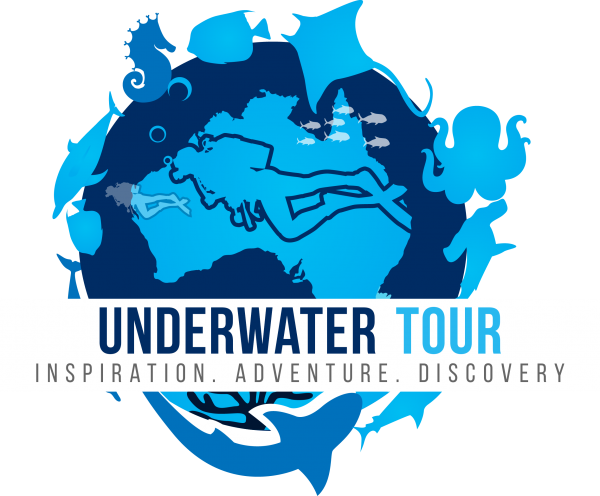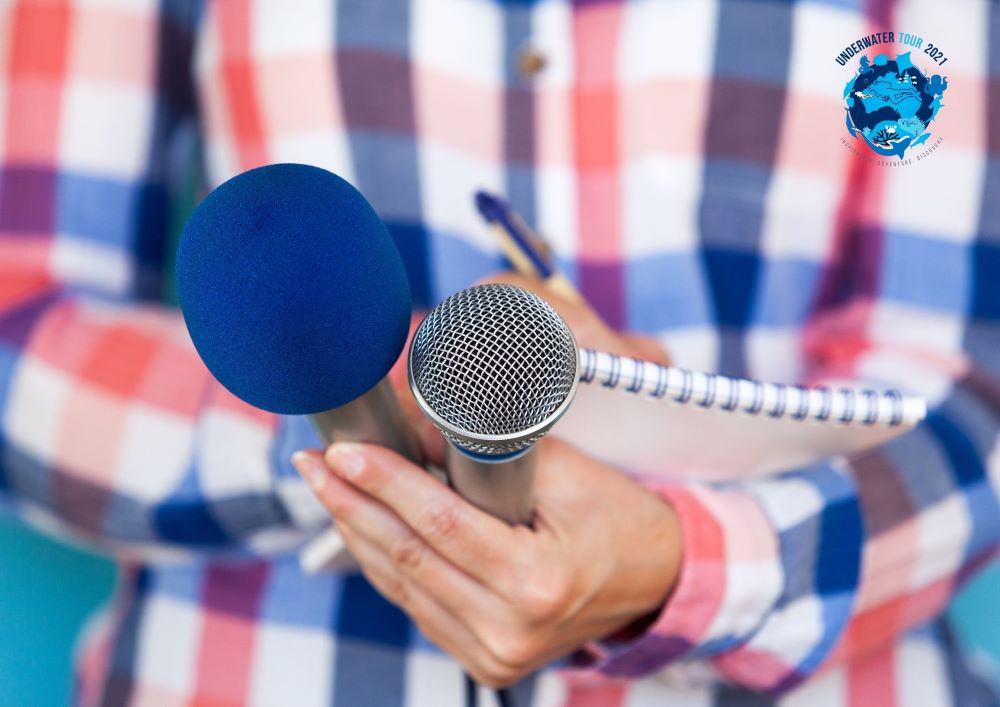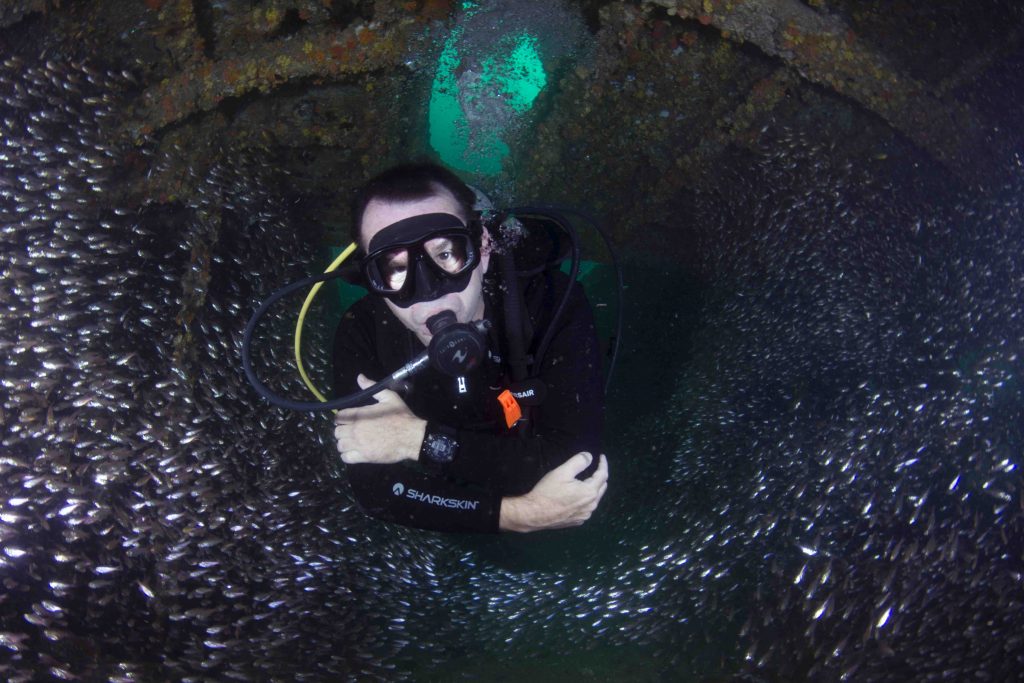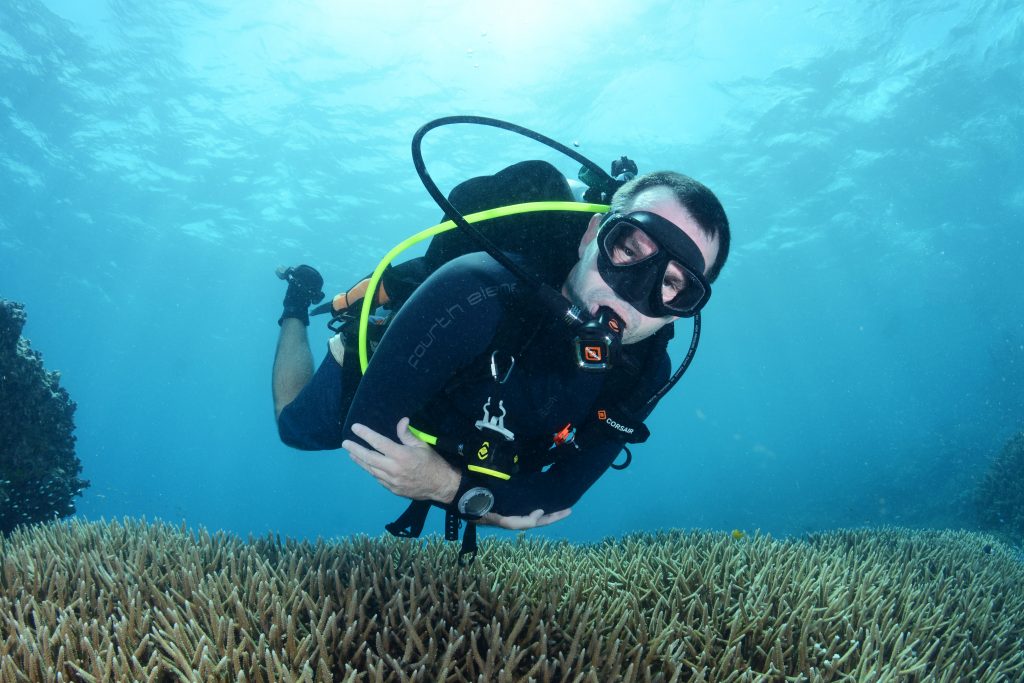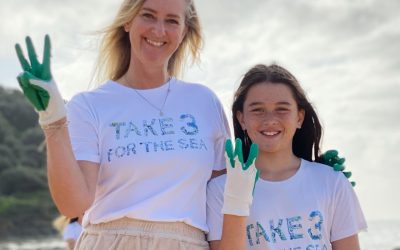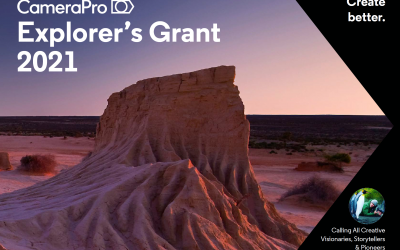Next in the water we have Adrian Stacey, Editor of Scuba Diver Magazine ANZ
Q and A with Juliette Myers.
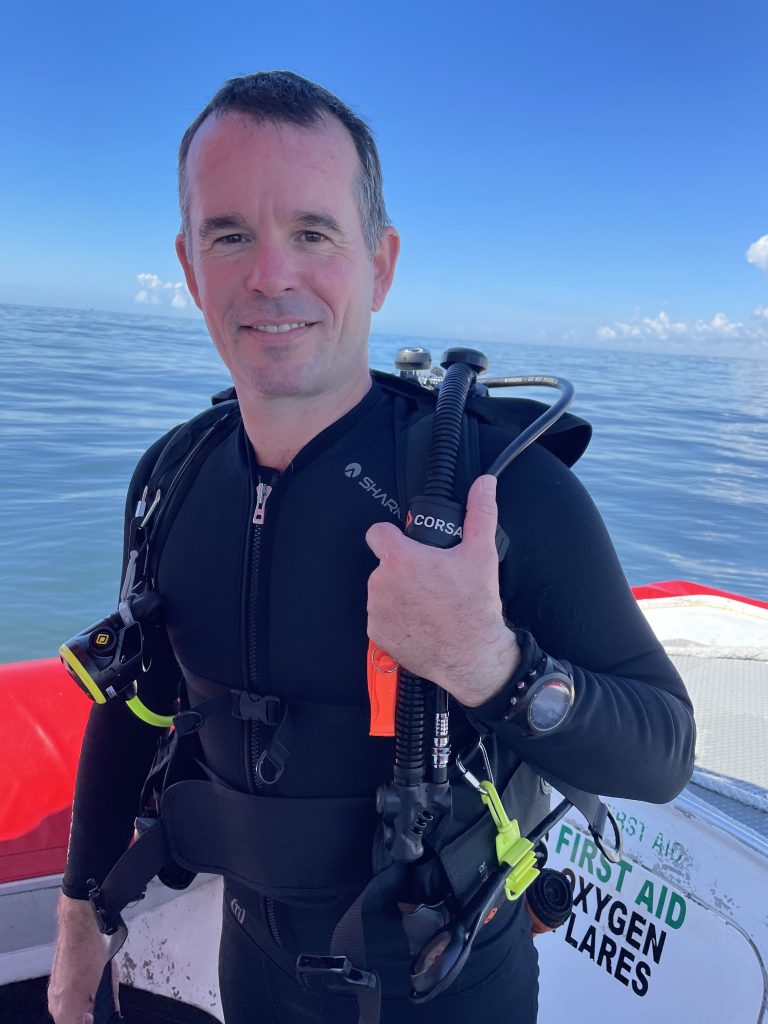
JM: Adrian you’re a PADI Master Scuba Diver Trainer with upwards of 6000 dives since you first started out underwater 24 years ago – how did you first come to love the Underwater World?
AS: This might sound like a bit of a cliché, but in my early 20s I was on my obligatory round the world trip from the UK. While I was in Cairns, I did my open water course, and this also included a 3-night liveaboard on the Great Barrier Reef. It was the most fantastic experience of my year-long journey. Once back in the UK, I returned to selling photocopiers and doing the occasional diving holiday. It took me about six years to realize that perhaps selling photocopiers was not what I was cut out for, and I moved to Egypt to become a dive instructor.
JM: When did you first take a camera underwater? What was it and do you remember the first picture you captured?
AS: I have always been interested in photography and even studied it at school. Taking a camera underwater was a natural step for me once I had completed my instructor training. My first camera was a Sony Cybershot that I purchased along with a housing and red filter in 2003. I am pretty sure the first thing I took a picture of was a gorgonian sea fan, or perhaps the tail of a fish! After about a year of happily snapping away with a point and shoot, I upgraded to a Nikon D200 with Hugyfot housing and Inon strobes.
JM: What would be your own favourite underwater creatures?
AS: There are so many amazing creatures that it is difficult to name one, I love watching cuttlefish and octopi, but my preference is for the big stuff. I could happily spend hours immersed in a huge school of fish, and sharks are fascinating creatures at the top of their game. However, if I had to name one, it would probably be Manta Rays. They are incredibly graceful, and I have had some terrific interactions with them over the years. In Komodo, I have witnessed mating trains and feeding frenzies and spent well over an hour in the water on one dive with at least 40 mantas, but one encounter in particular sticks in my mind. I was diving in Costa Rica at Catalina island, which is renowned for Oceanic manta rays. At the time, I was working as a photographer. The group had just surfaced, and I was on my own doing my safety stop when two huge oceanic mantas came into view. One glided towards me checked me out, eyeball to eyeball. This was clearly a very intelligent, curious creature. When it moved away, it seemed like the manta knew its massive wing could do me some serious damage, so it edged carefully away before performing numerous barrel rolls and flybys in front of me.
JM: Can you share a funny diving story?
AS: There have been many amusing and funny incident over the years but many of these are, “you had to be there moments”. I do remember one incident, though, from when I was in Komodo. I was guiding a family, and we were diving at Makassar reef. This is a long, flat, relatively shallow reef prone to strong currents and is a favourite place for mantas to congregate. The undulating topography and loose rubble composition of the dive site can make it challenging to stay in one place for very long when the current is pumping. On the day in question, the current was fierce, and we had all just about managed to secure ourselves to the ocean floor to watch a procession of mantas visit a nearby cleaning station, when the Dad lost his grip. He came rolling down like a ten-pin bowling ball and took out his entire family. They then all rolled off down the reef like a load of tumbleweed. I laughed so much I kept flooding my mask. When I had recovered, I left my front-row seat in the manta parade and found them further down the reef, the mother and kids still looking non too pleased with the Dad.
JM: When diving it’s possible to meet interesting characters along the way… what has been the most bizarre encounter you’ve had while traveling?
AS: Diving does undoubtedly attract a lot of colourful individuals. Perhaps it is the somewhat transient lifestyle that appeals to some quirky personalities, from the entertaining to the scary! While not exactly a bizarre encounter with an individual, one of my most bizarre experiences when travelling happened while working in Cabo San Lucas in Mexico. A category four hurricane had just hit us, and the region was totally unprepared. Food and water were scarce. There was no power in town, and looting was rife. After the forth night, people on the road where we lived started to barricade each end of the street, after a rumour, the looters were turning their attention away for the now empty stores and onto the houses and apartments of the downtown area. So, when two of our colleagues, a Mexican man and his British wife, told us they were escaping the mayhem in their Winnebago, we jumped at the chance to join them. They came to pick us up later that afternoon, accompanied by their five large Pitbulls. So, we climbed over the barricade that I had been asked to man with a machete that night, and head off into the sunset. About 4 hours later, and having passed through several police checkpoints, we arrived in the town of La Paz. We then spent the next few days camping on deserted beaches, drinking tequila and catching up with other refugees from Cabo San Lucas. I should point out that nothing actually happened in Cabo San Lucas that night. The mass hysteria that saw all the streets in the downtown area barricaded by their residents was unnecessary. But better safe than sorry.
JM: If you’d like to pick a dive buddy from any time or place, who would it be and why?
AS: It would have to be Sir David Attenborough. Why! Because it’s Sir David Attenborough! He would have access to the best equipment. He would be able to obtain permits to dive anywhere you could think of and some places you had never even imagined, and surface intervals would never be boring with the great man sharing one of his many amazing stories.
JM: You’ve just released Issue 32 of the ANZ Scuba Diver Magazine… you’ve had to steer the magazine through a very difficult 12 months. What are the positive outcomes you now see that would not have otherwise been evident had world dive travel been tracking normally?
AS: Prior to the Pandemic, it seemed like there was a “what’s in it for me mentally” globally. The outbreak of Covid 19 has made us reassess what is important, and I have found that people are keener to help each other out. It has given us a new appreciation of the environment, and resorts, dive shops and tour operators have had the chance to focus on environmental projects, from beach clean-ups to coral planting. Sustainable and even regenerative travel will become more popular in the future, with some operators offering immersive regeneration projects for customers to get involved with, like citizen science on the Great Barrier reef. The Pandemic allowed companies and regions to invest in new infrastructure, additional maintenance works and boat refits. It has also given us a great appreciation of what is in our back yard and has led to more people learning to dive.
JM: What do you see as Scuba Diver Magazine’s role in our niche sector in Australia and New Zealand?
AS: I believe that dive magazines, in general, play an important role in our industry and will do for many years to come. The internet is great if you know what you are looking for, but how do you know to search for something if you do not know it exists. Scuba Diver Magazine is a high-quality magazine that ignites an interest in our readers for adventure. We offer an opportunity for photographers and photojournalists, both seasoned pros and new up and comers to showcase their work and provide an insight into the superb diving on offer around these shores and further afield. We are an excellent vehicle to stimulate interest in all facets of the dive community. The magazine has a well-balanced mixture of news, monthly columns; on subjects like Dive Medicine, UW photography and conservation, we review the latest dive equipment, plus there are plenty of image-rich destination features to whet the appetite. We are available online and in print, a medium that is still very relevant, even in this modern internet era. Print offers a tactile alternative to a digital image, and studies have shown print is still a more trusted medium than the internet. I might be showing my age, but I like having something physical to hold and flick through. I still look forward to receiving my copies of the magazine each month, and I think I am indicative of the demographic of divers in the region. One of my contributors summed it up best. When I asked him why it was important for him to feature in the magazine and not just provide a monthly blog on our website, he replied. “Anybody can get something published on the internet, but if you get something published in a magazine, you are taken more seriously”. Our magazine is available at dive centres and is also sent out with the orders of several distributors. This means we are getting directly into the hand of active divers or people learning how to dive. The online version of the magazine and our website, newsletter, and social media channels are appealing to the new generation of divers.
JM: What do you feel the vibe is out there in 2021?
AS: Along with the “New Normal”, Cautiously Optimistic is a new phrase that has entered our lexicon, and I think that would sum up the current Vibe. Australia and New Zealand did a great job containing the Pandemic, which has led to a lot of confidence in the economy. People seem to have money to spend and are eager to spend it on new pursuits like diving. However, the uncertainly surrounded border closures, both international and state, need to be addressed to give some stability and confidence to the tourism sector. Australians and New Zealanders have done a great job supporting local business, but the fact is the industry is still suffering and in need of an influx of tourists.
JM: If you could give one piece of good advice for readers of your magazine, what would it be?
AS: Think about what you can do to give a little back. Get involved in an environmental project and support your local operator. If you are planning to go abroad when borders reopen, book a trip to one of the international destinations that have suffered most in our absences and perhaps consider giving an extra-large tip to your dive guide or instructor. Also, have patience when you travel, the tourism and dive industry has been through a lot, and while I am sure it will recover to its former glory, it might take a bit of time.
Thank you Adrian. Thank you Scuba Diver Magazine!
